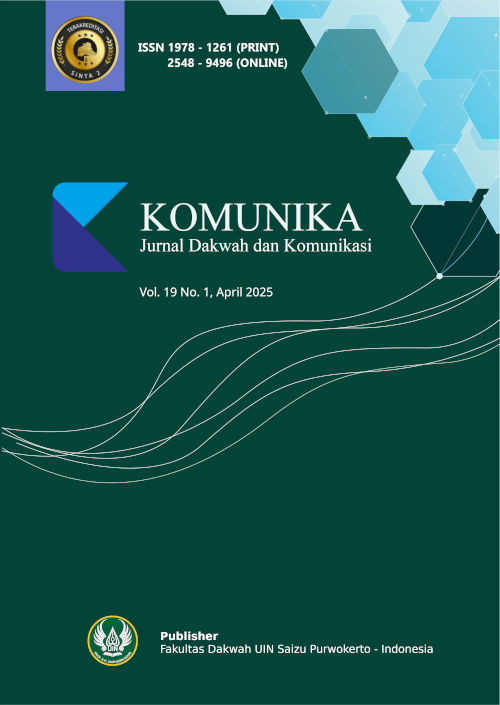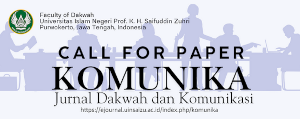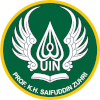The Power of Social Media: A Narrative Analysis of Rohingya Refugee Rejection on TikTok
DOI:
https://doi.org/10.24090/komunika.v19i1.13119Keywords:
Rohingya refugees, TikTok, social media, narrative analysis, Ali HamzahAbstract
This study explores how TikTok social media narratives affect public opinion on social issues related to Rohingya refugees in Aceh. This study analyzes the narrative of Rohingya refugee rejection in Aceh by studying TikTok social media content produced by Ali Hamzah, a content creator with 1.1 million followers. The focus of the research is the shift in the perspective of the Acehnese people from acceptance in 2015 to rejection in 2023-2024. This research uses a qualitative approach with a content analysis method to examine TikTok videos uploaded by Ali Hamzah from December 2023 to July 2024 with the theme of Rohingya refugees. The data were analyzed using thematic coding techniques to identify dominant narrative patterns. The results show that the narrative of rejection is formed through three main themes: criticism of the shelter system, security and legality issues, and socio-economic impact. Ali Hamzah uses a narrative strategy that includes emotional language, persuasive visual techniques, and framing the issue as a national security threat. The content produced by Ali Hamzah strengthens the shift in Acehnese’s perception of Rohingya refugees. This shift in perception has an impact on the refusal of Rohingya refugees by the Aceh people. The study concludes that social media plays an important role in shaping and reinforcing the sentiment of rejection towards Rohingya refugees in Aceh.Downloads
References
Adi, W. (2019). Penggunaan Media Sosial Sebagai Trend Media Dakwah Pendidikan Islam di Era Digital. Jurnal Islam Nusantara, 03(02), 18.
Ali Hamzah. (2024). Election Issues (p. 6 Januari 2024).
Amalia, A., & Damayanti, D. (2024). Sentiment Analysis of Public Opinion on Social Media X Towards Ethnic Rohingya in Indonesia. JURTEKSI (Jurnal Teknologi Dan Sistem Informasi), 10(3), 443–450. https://doi.org/10.33330/jurteksi.v10i3.3079
Berger, L. Peter Luckmann, T. (1966). The Social Construction of Reality. Anchor Book.
Boeker, M., & Urman, A. (2022). An Empirical Investigation of Personalization Factors on TikTok. Proceedings of the ACM Web Conference 2022, 2298–2309. https://doi.org/10.1145/3485447.3512102
Damayanti, A. (2020). Instagram sebagai Medium Komunikasi Risiko di Masa Pandemi COVID-19: Studi Netnografi terhadap Komunitas Online KawalCOVID19.id. Jurnal Komunikasi Pembangunan, 18(02), 176–193. https://doi.org/10.46937/18202032355
Ellcessor, E. (2017). Cyborg hoaxes: Disability, deception, and critical studies of digital media. New Media and Society, 19(11), 1761–1777. https://doi.org/10.1177/1461444816642754
Fadhil, H. M. (2024). Hate Speech on Cyberspace : Fueling the Rejection of Rohingya Refugees in Indonesia. Jurnal Penelitian, 21, 30–44.
Hamzah, A. (2024). Possession Case (p. 11 Januari 2024).
Hidaya, N., Qalby, N., Alaydrus, S. S., Darmayanti, A., & Salsabila, A. P. (2019). Pengaruh Media Sosial Terhadap Penyebaran Hoax Oleh Digital Pengaruh Media Sosial Terhadap Penyebaran Hoax (Issue January).
Junaedy, A., Huraerah, A., Abdullah, A. W., & Rivai, A. (2021). Pengaruh Teknologi Informasi Dan Komunikasi Terhadap Pendidikan Indonesia. Jurnal Penelitian Dan Kajian Sosial Keagamaan, 18, 133–146. https://dx.doi.org/10.31958/jaf.v11i2.10548
Lueders, A., Prentice, M., & Jonas, E. (2019). Refugees in the media: Exploring a vicious cycle of frustrated psychological needs, selective exposure, and hostile intergroup attitudes. European Journal of Social Psychology, 49(7), 1471–1479. https://doi.org/10.1002/ejsp.2580
Porten-Cheé, P., & Eilders, C. (2020). The effects of likes on public opinion perception and personal opinion. Communications, 45(2), 223–239. https://doi.org/10.1515/commun-2019-2030
Raharema, N. R. A. (2024). The Shifting Attitudes of Acehnese towards Rohingya Refugees: Rise of Autochthony. Nation State: Journal of International Studies, 7(1), 1–13. https://doi.org/10.24076/nsjis.v7i1.1489
Setiaji, A. B., & Fajriani, F. (2022). Analisis Wacana Kritis :Pemberitaan Konflik Rohingya Di Media Komunikasi. Lingue : Jurnal Bahasa, Budaya, Dan Sastra, 4(1), 51. https://doi.org/10.33477/lingue.v4i1.3258
Sopamena, C. A. (2023). Pengungsi Rohingya Dan Potensi Konflik & Kemajemukan Horizontal di Aceh. Jurnal Caraka Prabu, 7(2), 85–115. https://doi.org/10.36859/jcp.v7i2.1927
Sya’bani, M. A. Y. (2019). Pembelajaran Pendidikan Agama Islam Berwawasan Multikultural Di Era Digital. Prosiding Seminar Nasional Prodi PAI UMP Tahun 2019, 155–170.
Tohira, S., & Yahya, A. H. (2024). Analisis Bahasa Sarkasme pada Komentar Netizen terhadap Pemberitaan Rohingya di Akun TikTok Tribun Bogor. Jurnal Ilmu Komunikasi Dan Sosial Politik, 1(4), 652–661.
Utami, P. (2019). Hoax in Modern Politics: The Meaning of Hoax in Indonesian Politics and Democracy. Jurnal Ilmu Sosial Dan Ilmu Politik, 22(2), 85–97. https://doi.org/10.22146/jsp.34614
Williams, C. B., Fedorowicz, J., Kavanaugh, A., Mentzer, K., Thatcher, J. B., & Xu, J. (2018). Leveraging social media to achieve a community policing agenda. Government Information Quarterly, 35(2), 210–222. https://doi.org/10.1016/j.giq.2018.03.001
Willnat, L., & Weaver, D. H. (2018). Social Media and U.S. Journalists. Digital Journalism, 6(7), 889–909. https://doi.org/10.1080/21670811.2018.1495570
Zukni, A. Z. A., Muhammad, M. M., & Anuar, F. N. (2024). Analyzing the Effects of TikTok on Youth Psychological Well-Being : A Systematic Literature Review. Jurnal Komunukasi: Malaysian Journal of Communication, 40(3), 504–528.
Downloads
Published
Issue
Section
License
Copyright (c) 2025 Munirah, Rauzatul Jannah, Amalia, Muhammad Nur Farhan Zamziba

This work is licensed under a Creative Commons Attribution-ShareAlike 4.0 International License.
Authors who publish with this journal agree to the following terms:
- Authors retain copyright and grant the journal right of first publication with the work simultaneously licensed under a Creative Commons Attribution-ShareAlike 4.0 International License that allows others to share the work with an acknowledgement of the work's authorship and initial publication in this journal.
- Authors are able to enter into separate, additional contractual arrangements for the non-exclusive distribution of the journal's published version of the work (e.g., post it to an institutional repository or publish it in a book), with an acknowledgement of its initial publication in this journal.
- Authors are permitted and encouraged to post their work online (e.g., in institutional repositories or on their website) prior to and during the submission process, as it can lead to productive exchanges, as well as earlier and greater citation of published work (See The Effect of Open Access).

























